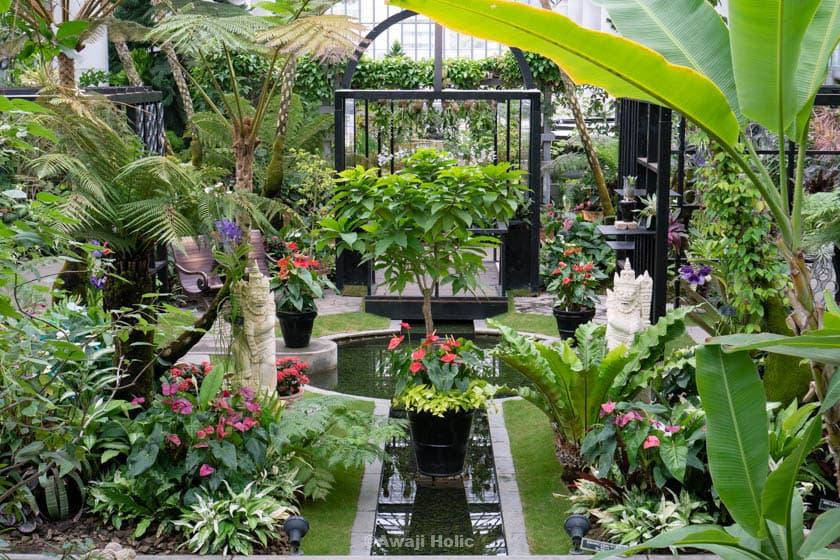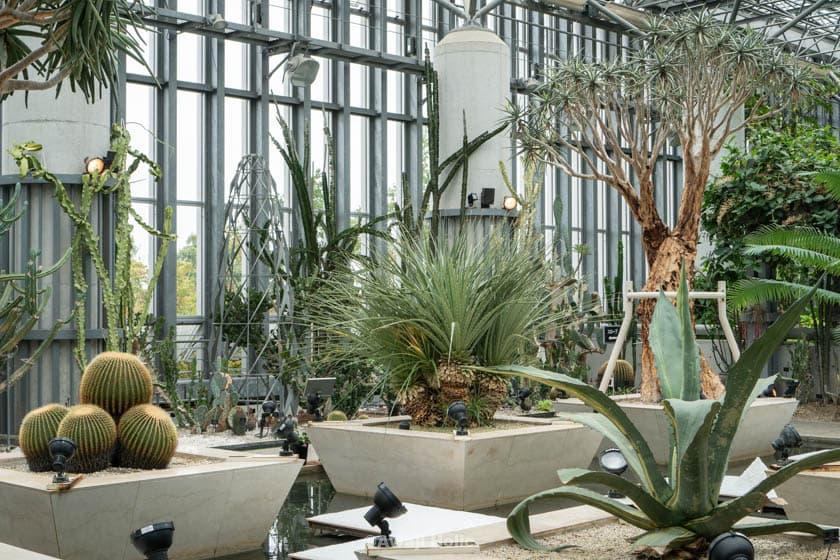The Awaji Greenhouse, which reopened in September 2021 at Awaji Yumebutai, is one of the largest greenhouses in Japan and was designed by world-renowned architect Tadao Ando. With the renewal, Mr. Junichi Inada became the director of the pavilion, and a new symbol, the "Garden Castle," was introduced. The museum is divided into five themes, allowing visitors to enjoy the multifaceted appeal of plants. It is especially recommended for gardeners and flower lovers, who can also relax in the museum's café after a stroll. This greenhouse is a new tourist attraction that combines the beauty of plants and architecture.
This article describes the interior of the Awaji Greenhouse as well as the charms of the actual visit.
Contents
Tourist Attractions in Awaji Greenhouse

- This is one of the largest greenhouses in Japan, where visitors can see rare and colorful plants from around the world.
- The museum has a rest area with a kids' space and a library corner with a collection of picture books and illustrated books on plants.
- At the café, visitors can enjoy sweets made with Awaji Island-grown algal salt and lemons.
- Visitors can also relax in the museum's café after a walk.
The Awaji Greenhouse is a new tourist attraction that combines the beauty of plants and architecture, especially for gardeners and flower lovers. As part of the Awaji Yumebutai, it is also one of the most popular tourist attractions.
Exhibition room and plants at the Awaji Greenhouse

The plants on display at the Awaji Greenhouse are as follows
[Exhibition Hall 1: Midori no Choukoku (Green Sculpture)] Succulent plants suited to arid regions, such as cacti and euphorbia, are on display. Visitors can enjoy the beautiful "green sculpture" forms of these plants.
[Room 2: Shikisai no Niwa (Garden of Colour)] Plants with vivid colors that are native to tropical and subtropical regions are on display. The vivid beauty and green magic of each plant draws visitors into the world of plants.
[Exhibition Hall 3: Kurashi no Midori (Greenery in Daily Life)] Plants play an important role in maintaining the balance of nature, as well as providing enrichment and a sense of security in our daily lives. Visitors can learn about the various plants found in our daily lives.
[Exhibition Hall 4: Shinka no Niwa (Garden of Evolution)] The Jurassic tree, which was found in Australia in the 1990s and whose existence had been confirmed only by fossils, is on display in this cultivated exhibit. From this exhibit, visitors can experience the amazing evolutionary history of plants.
[Exhibition Hall 5: Nigiwai no Niwa (Lively Garden)] The "Garden Castle" is the symbol of the Awaji Greenhouse. Various displays are designed to help children become familiar with plants. It is a garden of flowers and greenery festival for parents and children to enjoy together.
In addition to the above, Awaji Greenhouse has a hikage-no-wa, terrace, atrium, and special exhibition room.
It is a very impressive botanical garden, so we recommend that you take your time to visit.
Awaji Greenhouse Basic Information
| Name | Awaji Greenhouse |
| Address | 4 Yumebutai, Awaji City, Hyogo Prefecture |
| Phone | 0799-74-1200 |
| Official WEB | https://awaji-botanicalgarden.com/english/ |
| Opening hours | 10:00-18:00 (last admission at 17:30) |
| Closed | 2nd Thursday in July and November |
| Admission | Adults 750 yen, seniors 70 and over 370 yen, high school students and younger free |
| Parking | Grand Nikko Awaji underground parking lot |
| Parking fee | Usage fee: 600 yen per day (free if you use the souvenir store or restaurant at Yumebutai) |
| Access | Public Transportation: JR Sannomiya Station ⇒ Highway bus bound for Higashiura BT ⇒ Get off at Awaji Yumebutai-mae bus stop. 10 min. walk. By car: Kobe-Awaji Naruto Expressway ⇒ Awaji IC ⇒ Tanoshiro intersection ⇒ Route 28 toward Sumoto and Tokushima ⇒ Yumebutai-mae intersection |

